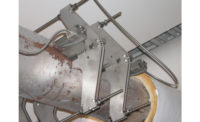If you remember the rolling blackouts suffered by Californians in the years 2000 and 2001, you may also remember that they cost companies in excess of $50 billion in lost manufacturing capacity and sales.
The causes?
The California electricity crisis was a situation where California had a shortage of electricity supply caused by market manipulations, illegal shutdowns of pipelines by the Texas energy consortium, Enron, and capped retail electricity prices by the California legislature. As a result, the state suffered from multiple large-scale blackouts. One of the state’s largest energy companies, Pacific Gas & Electric (PG&E), nearly collapsed, and the economic fall-out greatly harmed thousands of manufacturing businesses.
Delays in approval of new power plants combined with market manipulation also decreased supply. This caused an 800 percent increase in wholesale prices from April 2000 to December 2000. In addition, rolling blackouts adversely affected many businesses dependent upon a reliable supply of electricity, and created problems for millions of retail consumers.
California had an installed generating capacity of 45 gigawatts. At the time of the blackouts, demand was 28 gigawatts. A demand supply gap was created by energy companies, mainly Enron, to create an artificial shortage. Energy traders took power plants offline for maintenance in days of peak demand to increase the price. Traders were thus able to sell power at premium prices, sometimes up to a factor of 20 times its normal value. Because the state government had a cap on retail electricity charges, this market manipulation squeezed the industry’s revenue margins and caused PG&E to seek Chapter 11 bankruptcy protection in addition to the near bankruptcy of Southern California Edison in early 2001.
A CREATIVE SOLUTION
What you may not remember is the good that came out of that disaster.
For once government was able to respond quickly and creatively to ensure the situation would not happened again. Several actions were taken, but the most elegant was the California Public Utilities Commission (CPUC) Self-Generation Incentive Program (SGIP).
It provides incentives to businesses (mostly manufacturers) to support existing, new, and emerging distributed energy resources. The SGIP provides rebates for qualifying self-generating energy systems installed on the customer’s side of the utility meter. Qualifying technologies include wind turbines, waste heat to power technologies such as HRSG, pressure reduction turbines, internal combustion engines, microturbines, gas turbines, fuel cells, and advanced energy storage systems. The initial idea was for the businesses to run whatever qualifying system they chose during peak demand. But in many cases larger systems were able to operate around the clock — mostly gas turbine-driven combined heat and power (CHP) systems that capture the heat from the turbine used to create electricity and use it to produce heat for the facilities in the winter and drive absorption chillers in the summer.
Today, the SGIP — with more than 670 completed projects for a total capacity exceeding 330 megawatts — is one of the longest-running and most successful distributed generation incentive programs in the country. In 2014 alone, these facilities provided over 1,000 MWh of electricity to California, enough electricity to meet the needs of over 120,000 homes. The program continues to make strides towards a cleaner, distributed-energy future.
Since 2001, the SGIP has evolved significantly. It has been modified to include energy storage technologies, to support larger projects, and to provide an additional 20 percent bonus for California-supplied products.
The commission took this opportunity to expand the portfolio of eligible technologies, modify the incentive approach, and to enact other operational requirements including warranties and performance monitoring to ensure greenhouse gas reductions. SGIP incentives by technology are shown below:
SGIP Incentive Levels Category
|
Technology Type |
Incentive ($/W) |
|
Renewable and Waste Heat Capture |
|
|
Wind Turbine |
$1.07 |
|
Waste Heat to Power |
$1.07 |
|
Pressure Reduction Turbine |
$1.07 |
|
Non-Renewable Conventional CHP |
|
|
Internal Combustion Engine – CHP |
$0.44 |
|
Microturbine – CHP |
$0.44 |
|
Gas Turbine – CHP |
$0.44 |
|
Steam Turbine – CHP |
$0.44 |
|
Emerging technologies |
|
|
Advanced Energy Storage |
$1.46 |
|
Biogas Adder |
$1.46 |
|
Fuel Cell – CHP or Electric Only |
$1.65 |
MEASURING ENERGY - THE KEY TO THE PROGRAM
The most critical phase of the SGIP program is measurement. As famed engineer W. Edwards Deming once said, “You can’t manage what you don’t measure.” Fortunately the CPUC decided to let the public sector handle the measurement, thus avoiding another government bureaucracy.
The project was put up for bids and the winning bidder was RER, a noted metering company. Shortly thereafter RER was acquiredby Itron, an international company that specializes in providing smart metering solutions for electricity, gas, and water.
Responsibility for overseeing the SGIP program was assigned to George Simons, an Itron director with detailed experience in monitoring power generation systems.
“Our job is to provide evaluation services to determine how much new self-generation was being created and to look at the impacts on peak demand, energy savings, and reduction of greenhouse gases (GHGs),” said Simons.
THE PROBLEM WITH INTRUSIVE METERS
“When I first took over evaluation of the SGIP, we used a variety of subcontractors to install meters for electric, fuel, and thermal measurement at select facilities, including those who used process heating in their business processes,” said Simons. “Not all of the applications made to the program actually made it all the way through to completion. Some were withdrawn or never finished. As a result, we could not install the metering equipment until after the self-generation systems had been built and interconnected into the grid. That created a problem with the installation of flow metering equipment used for measuring thermal energy supplied by the self-generation systems. The meters that RER had typically installed in thermal applications were impeller-type meters that were inserted inside the heated water pipes and directly measured the flow going through the pipe. Installing impeller meters inside pipes containing scalding hot water posed challenges. The customers didn’t want to shut down a system for half a day to install a meter because of the lost revenue. So we installed the meters using ‘hot taps.’ Hot taps involved sweat soldering a special isolation valve onto the pipe that would allow us to drill down into the pipe and insert the impeller without the hot water escaping and scalding the installation technician.
“The problem with this process was that it was expensive and time consuming. Also, impellers eventually suffer from erosion or corrosion in a water environment and the data accuracy degrades, which is what we saw happening with the meters we installed. To maintain accuracy, we would have to remove damaged impeller systems and replace them. That meant expensive site visits. For the first year I was in charge we continued to use the hot tap procedure, but we were unhappy with it.”
AN ULTRASONIC SOLUTION
“Before coming to Itron, I had run an energy R&D program for the state and had some experience with ultrasonic flow meters,” said Simons. “Some of my colleagues were worried about the expense and the accuracy of ultrasonic meters. I said let’s look at it more closely. With the hot taps it was hard to coordinate the scheduling and we often had to go back two or three times. I said let’s try ultrasound because it is not invasive and it could resolve many of the issues associated with hot taps. There was some resistance because ultrasonics were perceived as expensive. But I told them of my experience and explained that any extra cost would be more than offset by time saved by the ease of installation.”
HOW ULTRASONIC FLOW METERING WORKS
The technique most ultrasonic flow meters use is called transit-time difference. It exploits the fact that the transmission speed of an ultrasonic signal depends on the flow velocity of the carrier medium, kind of like a swimmer swimming against the current. The signal moves slower against the flow than with it.
“When taking a measurement, the meter sends ultrasonic pulses through the medium, one in the flow direction and one against it,” said Peter Chirivas, an engineer with FLEXIM Americas, a major manufacturer of ultrasonic flow meters. “The transducers alternate as emitters and receivers. The transit time of the signal going with the flow is shorter than the one going against. The meter measures transit-time difference and determines the average flow velocity of the medium. Since ultrasonic signals propagate in solids, the meter can be mounted directly on the pipe and measure flow non-invasively, eliminating any need to cut the pipe.”
A LOW FLOW HURDLE
“We started a search, but had initial difficulty finding ultrasonics that could accurately measure low flows,” said Simon. “These self-generation systems have to be monitored 24/7, including during times when the system could be producing lower amounts of thermal energy, and most ultrasonics have a problem with measuring low flow. The smallest systems we deal with might be a 30 kilowatt microturbine or 5 kilowatt fuel cells.
“Eventually, we went to the website for FLEXIM Americas and found that they claimed to be able to measure extremely low flows. So we arranged for a demonstration.”
“It was very odd how we developed that low flow capability,” said Chirivas. “A company that offers groundwater monitoring services came to us because the meter they used had been discontinued. They wanted to know if ultrasound could measure flow that slow. We put our heads together and found we could adapt one of our existing models to fill their needs. That was a few years ago and we have since found out that there are many applications for our low flow meter.”
“The FLEXIM meters performed very well in demo at all flow rates,” said Simons. “One of the reasons we wanted to go to a non-invasive product was because they have no moving parts, unlike other meter technology. My previous experience with ultras tells me they last for a long time and require absolute minimum calibration. You just have to place the transducers correctly, but that’s pretty easy to learn how to do.
“Initially I had an engineer go out with an electrician to install the ultrasonic meter. Now we typically just use technicians. At first we would bench test the ultras so we could calibrate them for the specific system, but we soon found that FLEXIM calibrated them accurately in their lab, and, with no moving parts, we rarely have a problem with recalibration.
“So now the technicians go out, find the right locations for the transducers, and install them. Then they do some simple calculations we’ve developed based on what we know about the system we’re working on. We can check the values so we can commission the meter and it’s all done within half a day. It’s a very quick install. With the insertion meters it would take an entire day. And often we had to come back two or three times. Calibration was also an issue. The insertion meters had to be recalibrated every two years. No recalibration is required with the FLEXIMs. We no longer have to replace impellers and we are able to tie all of our metering into a single NEMA enclosure.”
COLLECTING AND ANALYZING DATA
“We now collect all this metering information digitally. Our electric meters have a cell modem,” said Simons. “And the FLEXIMs have their own data collection and communication system. We pull all that info into our data collection box and then we transfer all that information over to Itron servers. We collect data on a 15 minute interval basis and are able to synchronize what is going on, on the electrical side and the thermal side. That enabled us to actually visualize what was happening with all the self-generating systems we monitor. This capability gives us huge insights as to how the system was operating. We have discovered many plants were getting less waste recovery than they should be getting. That kind of insight gave us the basis for our ensuing reports to the utilities and gives details on how to maximize the efficiencies of the individual system.
“This one of the most transparent programs I’ve ever seen in terms of data availability. We don’t release customer data, but in regards to how efficiently systems operate and how much is saved and how much greenhouse gases are reduced, we provide a report every year that shows the performance of all of the technologies. There’s a wealth of data available to the utilities and the rate payers in the program. From my perspective, it provides high value to both the state and the rate payer. And it was recently extended through 2020.”
Publication date: 10/5/2015
Want more HVAC industry news and information? Join The NEWS on Facebook, Twitter, and LinkedIn today!
















